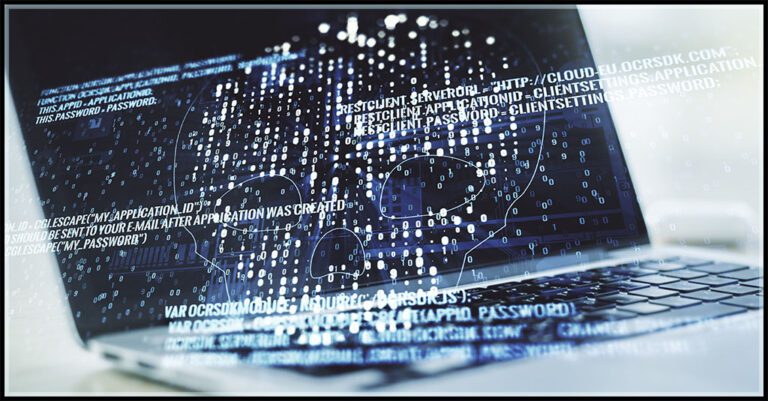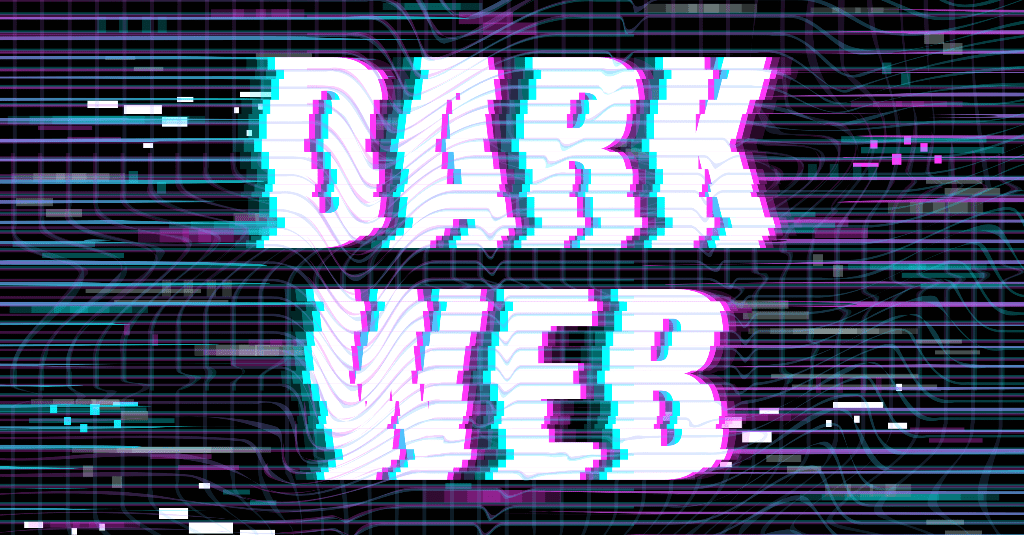The 5 Biggest Dark Web Threats Businesses Face Today

The dark web is a hotbed for illicit activities and clandestine transactions, from employees selling access to initial access brokers to bad actors selling stolen identities – and the advent of artificial intelligence (AI) assisted cybercrime is giving this already booming economy a push to new heights. This makes the dark web a significant threat to individuals and organizations alike. There are a wide variety of threats that businesses face from information and activity rolling around on the dark web. However, there are things that businesses can do to limit their risk. In the ongoing battle against cybercrime, a crucial tool has emerged: Dark Web Monitoring. This tool is essential for IT professionals who aim to keep businesses’ data and systems safe from today’s dangers including today’s biggest dark web threats.

Learn how to identify and mitigate malicious and accidental insider threats before there’s trouble! GET EBOOK>>
Today’s 5 biggest dark web threats
The dark web is a breeding ground for cybercriminal activities. It’s a snap for bad actors to acquire newly developed malware or AI-enhanced phishing kits. Cybercriminals are innovating too. As technology advances, so do the threats lurking in the shadows. Businesses need to take dark web threats seriously. These are the five biggest dark web cyber threats facing organizations today.
1. Ransomware-as-a-Service (RaaS)
Ransomware continues to be a pervasive threat, with cybercriminals leveraging sophisticated techniques to encrypt valuable data and demand ransom payments for its release. What’s even more alarming is the rise of Ransomware-as-a-Service (RaaS) on the dark web. RaaS platforms allow aspiring cybercriminals to easily launch ransomware attacks without needing extensive technical expertise. These platforms provide everything from ransomware deployment tools to customer support, making it easier than ever for individuals to profit from ransomware attacks. By 2031, a ransomware attack will strike a business every two seconds with an estimated annual cost of $265 billion in damage.
2. Stolen data marketplaces
The dark web is teeming with marketplaces where stolen data is bought and sold, and it’s not experiencing an economic downturn. Today, the dark web is the world’s third-largest economy. Huge quantities of data are available for low prices or even free, ranging from personal information and login credentials to financial data and corporate secrets. Cybercriminals steal this data through various means, including phishing attacks, data breaches, and malware infections. Once obtained, the data is sold on underground forums and marketplaces to the highest bidder. This stolen data can be used for identity theft, financial fraud, and other malicious activities, posing a significant threat to individuals and organizations alike.

How much is data really worth on the dark web? Find out in The IT Professionals Guide to the Dark Web! GET EBOOK>>
3. Insider threats and corporate espionage
Insider threats pose a significant risk to organizations, with disgruntled employees or malicious insiders using their access to sensitive information to steal data or sabotage systems. The dark web provides a platform for insiders to sell stolen corporate data to competitors or malicious actors. Additionally, corporate espionage is on the rise, with cybercriminals targeting organizations to steal proprietary information, trade secrets, and intellectual property for financial gain or competitive advantage. Employees who have given notice that they’re leaving a company are major risks for stealing data like intellectual property – 70% of insider intellectual property thefts take place within 90 days of an employee’s resignation.
4. Malware-as-a-Service (MaaS)
Malware-as-a-Service (MaaS) and its offshoot Ransomware-as-a-Service (RaaS) is a booming industry on the dark web. The affordability and availability of these services makes it easy and affordable for cybercriminals to easily access and deploy sophisticated malware tools and services. Some providers even offer monthly subscriptions. According to Microsoft researchers, one PhaaS group’s subscription prices vary dependent but on average cost about $800 per month. These services range from banking Trojans and keyloggers to remote access Trojans (RATs) and botnets. MaaS platforms provide a user-friendly interface and subscription-based pricing models, enabling cybercriminals to launch targeted attacks with minimal effort and cost.
5. Zero-Day exploits and vulnerability trading
Zero-day exploits, which target previously unknown vulnerabilities in software and hardware, are highly sought after on the dark web. This is a type of risk that is growing exponentially. A report by Google’s Threat Analysis Group (TAG) and Mandiant shows 97 zero-day vulnerabilities were exploited in 2023; a big increase over the 62 zero-day vulnerabilities identified in 2022. Cybercriminals and nation-state actors actively trade these exploits on underground forums and marketplaces, where they can fetch high prices. By exploiting zero-day vulnerabilities, attackers can gain unauthorized access to systems, launch targeted attacks, and evade detection by security measures.

Find out about five of today’s biggest dark web threats to businesses in this infographic. DOWNLOAD IT>>
How does dark web monitoring help neutralize dark web threats?
Dark web monitoring is a proactive cybersecurity measure aimed at detecting and mitigating threats originating from the dark web. It involves continuously scanning underground forums, marketplaces, and other hidden corners of the internet for any mention of sensitive information belonging to individuals or organizations.
- Data Collection: Dark web monitoring begins with the collection of vast amounts of data from hidden online sources like dark web markets and data dumps. This data includes everything from stolen credentials and financial information to proprietary business data and intellectual property. For example, a dark web monitoring solution could monitor a company’s employee and executive credentials, domains, IP addresses and email addresses.
- Scanning and Analysis: A combination of human analysts and advanced algorithms that harness AI may be employed to scan and analyze the collected data for any matches with information relevant to the monitored individuals or organizations. This could include email addresses, usernames, passwords and more.
- Alerting and Notification: When a match is found, indicating that sensitive information belonging to the monitored entity has been compromised and is being traded or sold on the dark web, the monitoring system generates an alert. This alert is promptly relayed to the organization’s security team or a designated point of contact.
- Response and Mitigation: Armed with this intelligence, the organization can take immediate action to mitigate the potential impact of the data breach. This may involve resetting compromised passwords, monitoring affected accounts for suspicious activity, notifying affected individuals, and implementing additional security measures to prevent further unauthorized access.

Learn to defend against today’s sophisticated email-based cyberattacks DOWNLOAD EBOOK>>
Dark Web ID is the leading dark web monitoring program
Dark web monitoring is a powerful cybersecurity tool that helps organizations stay vigilant against the ever-present threats lurking in the shadows of the internet. By proactively scanning the dark web for signs of compromised information, organizations can take swift action to protect their digital assets and safeguard sensitive information from falling into the wrong hands. In an age where cyber threats are increasingly sophisticated and pervasive, dark web monitoring is a crucial component of a robust cybersecurity strategy.
Dark Web ID ensures the greatest amount of protection with 24/7/365 human and machine-powered monitoring of business and personal credentials, including domains, IP addresses and email addresses. We uncover your compromised credentials in dark web markets, data dumps and other sources, and alert you to trouble fast, giving you the advantage to act before cybercriminals do.
Dark Web ID delivers the valuable intelligence you need to close security gaps with accurate data about your company’s dark web credential compromise threats. Get additional protection from unpleasant surprises with credential monitoring for your supply chain and for the personal email addresses of your executive and administrative users, reducing the risk from cybercriminals gaining access to a privileged account.
Dark Web ID delves into every corner of the Dark Web, including:
- Hidden chat rooms
- Unindexed sites
- Private websites
- P2P (peer-to-peer ) networks
- IRC (internet relay chat) channels
- Social media platforms
- Black market sites
- 640,000+ botnets
Learn more about Dark Web ID and how it works for businesses and MSPs. LEARN MORE>>
Kaseya’s Security Suite Helps Businesses Mitigate All Types of Cyber Risk Affordably
Kaseya’s Security Suite has the tools that MSPs and IT professionals need to mitigate cyber risk effectively and affordably, featuring automated and AI-driven features that make IT professionals’ lives easier.
BullPhish ID — This effective, automated security awareness training and phishing simulation solution provides critical training that improves compliance, prevents employee mistakes and reduces a company’s risk of being hit by a cyberattack.
Dark Web ID — Our award-winning dark web monitoring solution is the channel leader for a good reason: it provides the greatest amount of protection around with 24/7/365 human and machine-powered monitoring of business and personal credentials, including domains, IP addresses and email addresses.
Graphus — Automated email security is a cutting-edge solution that puts three layers of AI-powered protection between employees and phishing messages. It works equally well as a standalone email security solution or supercharges your Microsoft 365 and Google Workspace email security.
RocketCyber Managed SOC — Our managed cybersecurity detection and response solution is backed by a world-class security operations center that detects malicious and suspicious activity across three critical attack vectors: endpoint, network and cloud.
Datto EDR — Detect and respond to advanced threats with built-in continuous endpoint monitoring and behavioral analysis to deliver comprehensive endpoint defense (something that many cyber insurance companies require).
Vonahi Penetration Testing – How sturdy are your cyber defenses? Do you have dangerous vulnerabilities? Find out with vPenTest, a SaaS platform that makes getting the best network penetration test easy and affordable for internal IT teams.
Learn more about our security products, or better yet, take the next step and book a demo today!

Read case studies of MSPs and businesses that have conquered challenges using Kaseya’s Security Suite. SEE CASE STUDIES>>